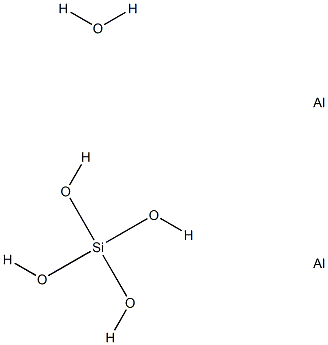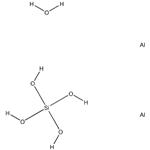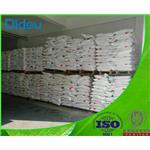Kyanite is easily distinguished from sillimanite or andalusite by its tabular, long-bladed, or acicular habit and by its bluish color and slightly lower
hardness than sillimanite and andalusite. The decomposition of kyanite is unpredictable; it first starts to decompose slowly at 1310°C, and
the reaction disrupts at about 1350 to 1380°C with an important volume expansion of
17 vol.%. For that reason, kyanite must always be calcined prior to being incorporated into
a refractory in order to avoid blistering and spalling.
Habit: blady, columnar, tabular, fibrous.
Color: blue, white, yellowish, gray, green,
or black.
Luster: vitreous (i.e., glassy), pearly.
Diaphaneity: translucent to transparent.
Streak: white.
Fracture: uneven, brittle.
Luminescence: pink to red.
Cleavage: (100) perfect, (010) imperfect.
Twinning: {100}. Chemical: insoluble in strong mineral acids.
The mineral kyanite is an aluminum silicate, corresponding to the formula Al2SiO5. It is triclinic, and has a good cleavage parallel to the macropinacoid. Its hardness varies considerably, depending on the crystallographic direction from 5 to 7.5; specific gravity, 3.56–3.67; luster, vitreous to pearly; color, commonly blue to white, but sometimes gray to green or nearly black; transparent to translucent; usually found in long-bladed crystals or columnar to fibrous structures. Kyanite is found in some metamorphic rocks as gneisses or mica schists. Of the many European localities for fine specimens might be mentioned the Ural Mountains of the former U.S.S.R.; the Czech Republic and Slovakia; Austria; Trentino, Italy; the St. Gotthard region of Switzerland; and France. In the United States, Chesterfield, Massachusetts; Litchfield, Connecticut; and Gaston County, North Carolina, have furnished fine specimens. Kyanite derives its name from the Greek word meaning blue, in reference to the delicate blue of the inner portions of the bladed crystals.
Kyanite in the form of
mullite is widely used in the manufacture of glass, burner tips, spark plugs, heating elements,
and high-voltage electrical insulations and in the ceramic industry. India is the largest producer of kyanite in the world.



